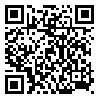Volume 12, Issue 1 (5-2025)
J Jiroft Univ Med Sci 2025, 12(1): 1798-1806 |
Back to browse issues page
Download citation:
BibTeX | RIS | EndNote | Medlars | ProCite | Reference Manager | RefWorks
Send citation to:



BibTeX | RIS | EndNote | Medlars | ProCite | Reference Manager | RefWorks
Send citation to:
Salimi M, Faryabi R, Mehni S, Pirouzeh R, Vaziri Nasab H, Daneshi S, et al . The Status of Self-Directed Learning Readiness among Students of Jiroft University of Medical Sciences during the Coronavirus Pandemic. J Jiroft Univ Med Sci 2025; 12 (1) :1798-1806
URL: http://journal.jmu.ac.ir/article-1-820-en.html
URL: http://journal.jmu.ac.ir/article-1-820-en.html
Maryam Salimi1 

 , Reza Faryabi2
, Reza Faryabi2 
 , Sareh Mehni3
, Sareh Mehni3 
 , Razieh Pirouzeh4
, Razieh Pirouzeh4 
 , Habibe Vaziri Nasab2
, Habibe Vaziri Nasab2 
 , Salman Daneshi2
, Salman Daneshi2 
 , Vahid Mashyekhi Mazar5
, Vahid Mashyekhi Mazar5 
 , Tahereh Rahimi6
, Tahereh Rahimi6 



 , Reza Faryabi2
, Reza Faryabi2 
 , Sareh Mehni3
, Sareh Mehni3 
 , Razieh Pirouzeh4
, Razieh Pirouzeh4 
 , Habibe Vaziri Nasab2
, Habibe Vaziri Nasab2 
 , Salman Daneshi2
, Salman Daneshi2 
 , Vahid Mashyekhi Mazar5
, Vahid Mashyekhi Mazar5 
 , Tahereh Rahimi6
, Tahereh Rahimi6 

1- Assistant Professor, School of Health, Jiroft University of Medical Sciences, Jiroft, Iran , m_salimi97@yahoo.com
2- Assistant Professor, School of Health, Jiroft University of Medical Sciences, Jiroft, Iran
3- School of Nursing and Midwifery, Jiroft University of Medical Sciences, Jiroft, Iran
4- Faculty of Medical Sciences, Esfarayen Faculty of Medical Sciences, Esfarayen, Iran
5- Deputy of Health, Jiroft University of Medical University, Jiroft, Iran
6- Faculty of Medicine, Jahrom University of Medical Sciences, Jahrom, Iran
2- Assistant Professor, School of Health, Jiroft University of Medical Sciences, Jiroft, Iran
3- School of Nursing and Midwifery, Jiroft University of Medical Sciences, Jiroft, Iran
4- Faculty of Medical Sciences, Esfarayen Faculty of Medical Sciences, Esfarayen, Iran
5- Deputy of Health, Jiroft University of Medical University, Jiroft, Iran
6- Faculty of Medicine, Jahrom University of Medical Sciences, Jahrom, Iran
Abstract: (1181 Views)
Introduction: The outbreak of the COVID-19 pandemic, in addition to putting the health of societies at risk, brought about significant impacts on various aspects of higher education. The aim of this study was to assess the readiness for self-directed learning in students of Jiroft University of Medical Sciences in the academic year 2021-2022, during the coronavirus pandemic.
Materials and Methods: This is a cross-sectional (descriptive-analytical) study that was conducted on 238 students of Jiroft University of Medical Sciences.In this study, participants were selected using the convenience sampling method. Data collection tools included a researcher-made demographic questionnaire and the standard Fisher’s Self-Directed Learning Readiness Scale. Data analysis was performed using statistical methods such as percentage, mean, standard deviation, t- student, and analysis of variance (ANOVA), results were evaluated using SPSS version 22 at a significance level of 0.05 (p≤0.05).
Results: Out of a total of approximately 1,041 students of Jiroft University of Medical Sciences, 238 participated in this study. The findings showed that income level significantly affected students’ self-directed learning. Also, the self-control dimension in medical students was different from that of students in environmental health engineering and laboratory sciences (p<0.05). Conclusion: Income level and field of study can affect students' self-directed learning. As a result, teaching students self-directed learning skills is an essential part of the teaching-learning process. This type of education should be implemented in universities to promote learning independence, lifelong learning, and the preparation of future health professionals of the country in a competent manner. |
Type of Study: Research |
Subject:
Health Sciences / Public Health
Received: 2024/12/28 | Accepted: 2025/03/13 | Published: 2025/05/31
Received: 2024/12/28 | Accepted: 2025/03/13 | Published: 2025/05/31
Send email to the article author
| Rights and permissions | |
 |
This work is licensed under a Creative Commons Attribution-NonCommercial 4.0 International License. |

